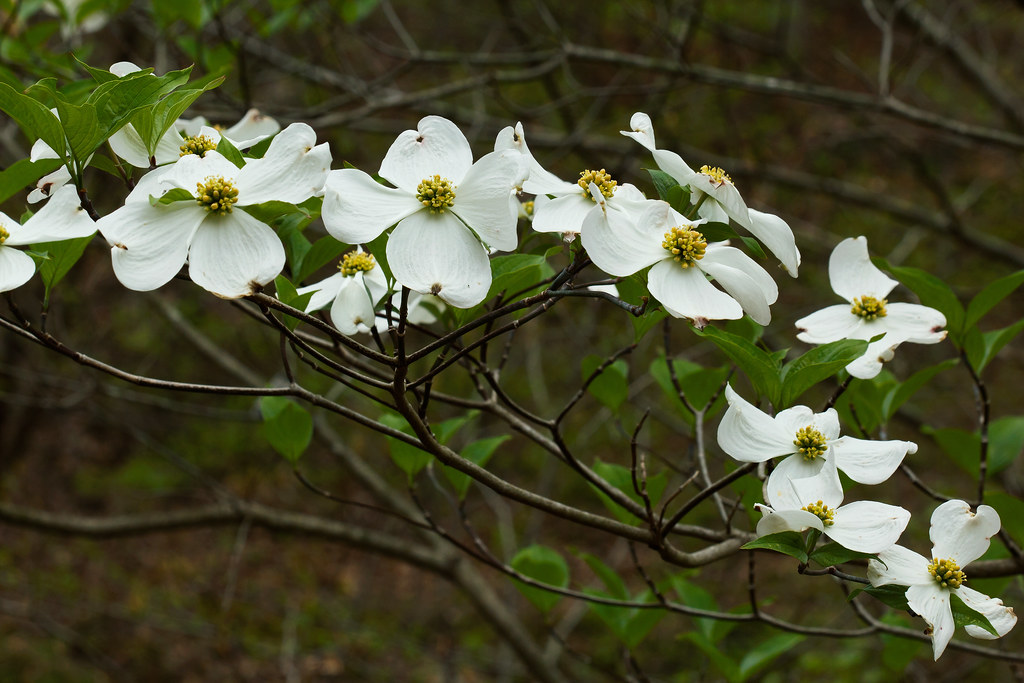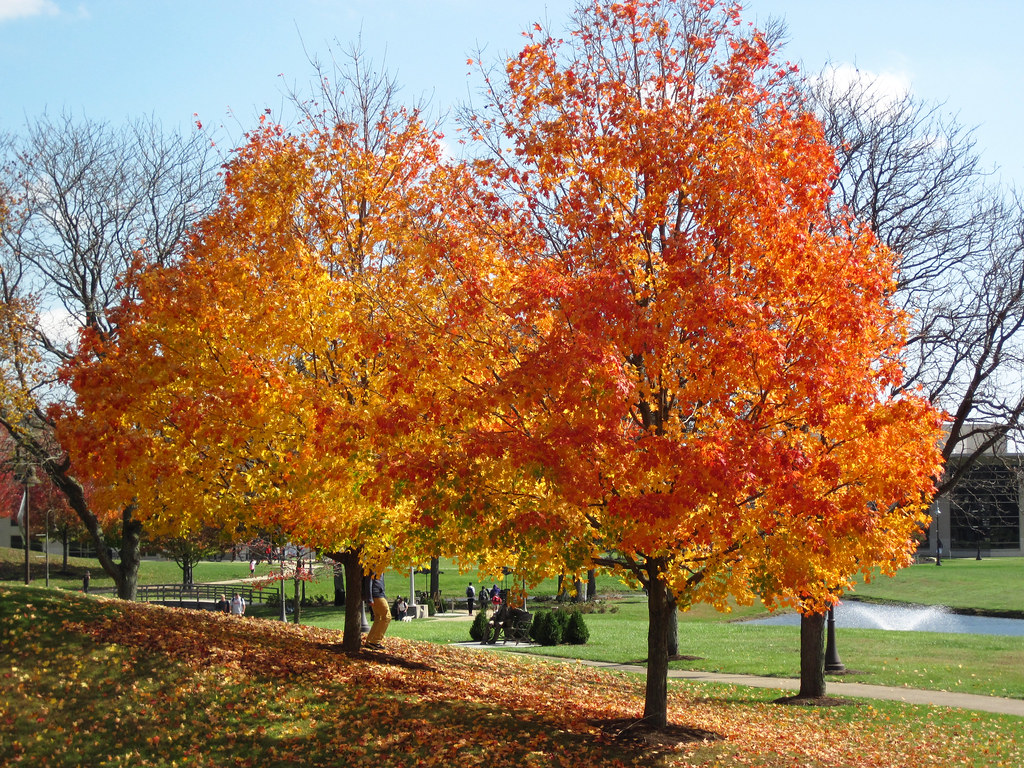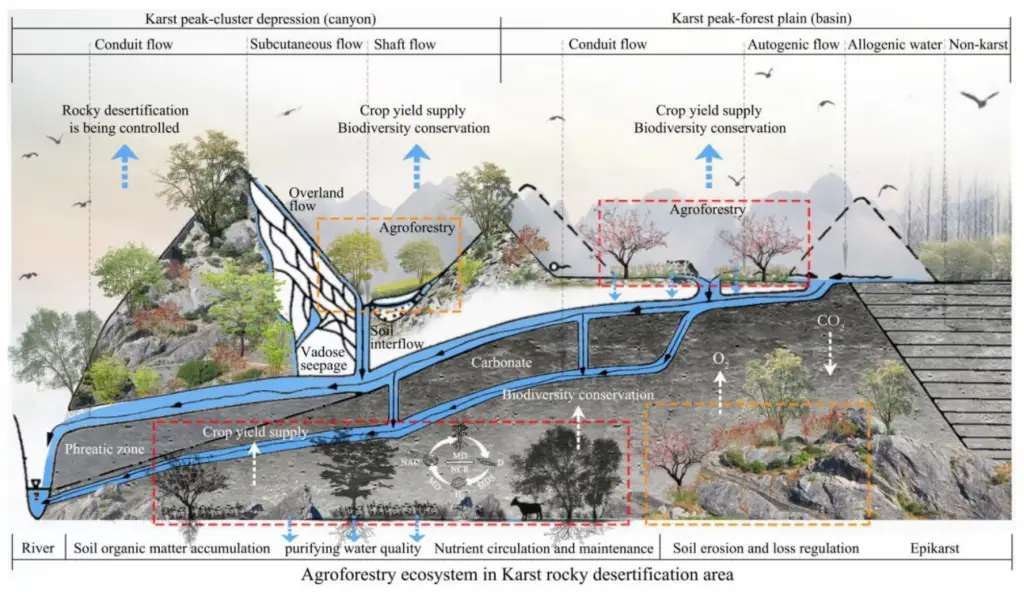Nestled within West Virginia’s scenic landscapes is a botanical treasure waiting to be unveiled.
Have you ever stood beneath the towering Quercus alba (White Oak), feeling its ancient presence? Or admired the delicate blossoms of Cornus florida (Flowering Dogwood), pondering its ecological role? Such questions are common for the professional researcher or the casual nature enthusiast.
Our guide on the “Majestic Collection of West Virginia Trees” is more than just a list. It’s a deep dive into the heart of West Virginia’s arboreal heritage. Carya ovata (Shagbark Hickory) and Pinus virginiana (Virginia Pine) are not mere scientific terms. They’re gateways to stories, ecological functions, and historical significance.
So, whether you’re a seasoned botanist or a curious mind, this journey promises insights and discoveries. Let’s explore the verdant tapestry of West Virginia together.
What’s the Most Common Trees of West Virginia?
This question has no definitive answer as it depends on several factors, including the specific location within West Virginia. However, some of the most common tree species in the state include Oaks (Quercus spp.), Maples (Acer spp.), Pines (Pinus spp.), and poplars (Populus spp.).
Types of Trees in West Virginia
West Virginia boasts a rich array of tree species, each with its unique characteristics and growth cycles. Here’s a concise guide to some of the most prominent trees in the state:
- Quercus alba (White Oak)
- Characteristics: Broad, rounded crown; lobed leaves; grayish-white bark.
- Growth Cycle: Slow-growing; can live up to 600 years.
- Image Suggestion: A mature White Oak in autumn, with its vibrant red leaves.
- How to Identify: Look for rounded leaf lobes and acorns with a warty cap.
- Cornus florida (Flowering Dogwood)
- Characteristics: Small, ornamental tree; white or pink blossoms in spring.
- Growth Cycle: Moderate growth rate; blooms in early to mid-spring.
- Image Suggestion: Close-up of the tree’s iconic four-petaled flowers.
- How to Identify: Distinctive opposite branching and four-petaled flowers.
- Carya ovata (Shagbark Hickory)
- Characteristics: Tall tree; distinctive shaggy bark; compound leaves.
- Growth Cycle: Slow-growing; produces nuts in the fall.
- Image Suggestion: A view of the tree’s shaggy bark peeling off in long strips.
- How to Identify: The unmistakable shaggy bark and compound leaves with five leaflets.
- Pinus virginiana (Virginia Pine)
- Characteristics: Medium-sized pine; twisted branches; paired needles.
- Growth Cycle: Fast-growing in its early years; matures in 20-50 years.
- Image Suggestion: A young Virginia Pine forest with its characteristic twisted branches.
- How to Identify: Look for paired needles and small, oval cones.
- Acer saccharum (Sugar Maple)
- Characteristics: Dense crown; vibrant fall colors; winged seeds.
- Growth Cycle: Moderate growth rate; can live up to 400 years.
- Image Suggestion: A Sugar Maple in autumn, showcasing its brilliant orange and yellow leaves.
- How to Identify: Look for opposite branching and distinctive five-lobed leaves.
This is just a snapshot of the diverse tree species found in West Virginia. Each tree plays a vital role in the state’s ecosystem, offering shelter, food, and even historical significance. Whether you’re hiking in the wild or strolling in a park, understanding these trees enriches your experience of West Virginia’s natural beauty.
How Can I Tell What Kind of Tree Do I Have?
In order to determine what kind of tree you have, there are a few things you can look for. First, consider the size and shape of the tree. Is it tall and slender, or short and wide?
Next, take a look at the leaves. What do they look like? Are they long and skinny, or short and wide?
Finally, examine the bark. Is it smooth or rough? Once you’ve considered all of these factors, you should be able to narrow down your options and identify your tree!
Get to know more on tree identification
What are the White Trees in West Virginia?
In West Virginia, the white trees are most likely American Sycamore trees. The scientific name for this tree is Platanus occidentalis. The American sycamore is the largest tree in the eastern United States.
It can grow to be over 100 feet tall and 6 feet in diameter! The bark of this tree is very thick and has a rough, scaly texture. The leaves are large, green, and have a pointed shape.
In the fall, the leaves turn brown and papery. The flowers are small and greenish-white in color. They grow in clusters on the branches of the tree.
The fruit of this tree is a small, brown seed that grows inside a round, green ball.
The American sycamore is found throughout the eastern United States, from Maine to Florida and west to Texas and Oklahoma. In West Virginia, it is most commonly found along rivers and streams.
This tree prefers to grow in moist soil that is rich in nutrients. It also needs full sun to prosper.

Credit: www.gardenbetty.com
Birch Trees in West Virginia
In West Virginia, the American birch (Betula papyrifera) is the most common type of birch tree. These trees are found in moist, cool areas with well-drained soils. They prefer full sun but can tolerate partial shade.
The American birch grows to a height of 50-70 feet and has a trunk diameter of 1-2 feet. The bark is thin and smooth, with a yellowish-white coloration. The leaves are ovate in shape and have a serrated margin.
The flowers are small and greenish-yellow in color, blooming in April or May. The fruit is a small nutlet that ripens in September or October. The American birch is used for lumber, pulpwood, veneer, and firewood.
It is also an important winter food source for many animals, including squirrels, mice, rabbits, deer, and birds.
Rare Trees in West Virginia
West Virginia has many different types of trees, but some are rarer than others. Here are a few of the most rare trees you can find in the state:
- The American Chestnut Tree was once one of the most common trees in the eastern United States. However, a fungal disease called chestnut blight decimated the population in the early 1900s. There are only a handful of these trees left in West Virginia today.
- The Pawpaw tree is native to North America and can be found in various parts of West Virginia.
These unusual looking trees have large leaves and produce edible fruit that tastes similar to bananas or mangoes. - The American Holly tree is another type of tree that is native to North America. This evergreen tree has glossy green leaves and produces red berries that are popular with birds during the winter months.
Learn more about tree diseases and how to cure them:
West Virginia Tree Bark Identification
When it comes to tree bark identification, there are a few things you need to know in order to make an accurate ID. First, take a close look at the tree’s bark. Is it smooth or does it have a rough texture?
If it’s smooth, does it have any patterns or markings on it? If so, what do they look like? Next, take a look at the tree’s leaves.
Do they have any distinguishing features such as shape, size, or color? Again, if so, make note of these details. Finally, consider the overall shape of the tree.
Is it tall and slender or short and stocky? Does it have a round crown or is its canopy more oblong? These factors can also help you narrow down your options when trying to identify a particular tree species.
With these tips in mind, let’s take a look at some common trees found in West Virginia and their corresponding bark IDs.
Are Money Trees and West Virginia Trees Related?
Money trees and West Virginia trees are not related, as the former is a popular houseplant native to Central America, while the latter encompasses a variety of tree species found in the state of West Virginia. However, both require proper care and maintenance. Here are some expert tips for braiding money tree to help promote healthy growth and beautiful foliage.
Frequently Asked Questions
How many trees are in west virginia
Estimating the exact number of trees in West Virginia is challenging without a specific and recent survey. However, we can make an educated guess based on available data.u003cbru003eWest Virginia is heavily forested. According to the U.S. Forest Service, as of my last update in 2021, about 78% of West Virginia’s land area is forested. That’s approximately 12 million acres of forestland.u003cbru003eThe number of trees per acre can vary widely based on the type of forest, age of the trees, past disturbances, and other factors. In the eastern U.S., it’s not uncommon for forests to have anywhere from 500 to 2,500 trees per acre, depending on the aforementioned factors.u003cbru003eu003cbru003eu003cstrongu003eUsing a conservative average of 1,000 trees per acre:u003c/strongu003eu003cbru003eu003cspan style=u0022text-decoration: underline;u0022u003e12,000,000 acres x 1,000 trees/acre = 12 billion treesu003c/spanu003eu003cbru003eu003cbru003eSo, a rough estimate might suggest around u003cstrongu003e12 billion trees in West Virginiau003c/strongu003e. However, this is a very generalized estimate, and the actual number could be higher or lower. For a more precise count, one would need a detailed survey or study specific to the region and the types of forests present.u003cbru003eu003cbru003eIf you need the most current and accurate data, I’d recommend checking with the West Virginia Division of Forestry or the U.S. Forest Service. They might have more recent surveys or studies that provide a closer estimate.
Conclusion
West Virginia has many different types of trees, but some are more common than others. In this guide, we will take a look at the most common trees in West Virginia and how you can identify them. We will also give you some tips on how to enjoy them.
Related Topics
UK Forests Collapse Imminent: Act Now Against Climate!
 Dr Ahsanur Rahman, PHD
Dr Ahsanur Rahman, PHD
Lightning Strikes Threat: Boreal Fires Jeopardize Carbon
 Dr Ahsanur Rahman, PHD
Dr Ahsanur Rahman, PHD
Bird Diversity in Agroforestry: Eco-Balance in the Tropics
 Dr Ahsanur Rahman, PHD
Dr Ahsanur Rahman, PHD











